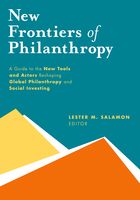I am at Takaful 2015 in Abu Dhabi, the conference on philanthropy organised annually by the Gerhart Center, American University of Cairo. It is a fascinating insight into how philanthropy functions in societies in transition – a single frame in a long movie whose end we cannot see.
The big theme on day one of the conference was youth. Defined here as anyone under 35, youth were the focus of the keynote speech by Sheika Al Zain Al Sabah, the head of the Ministry of Youth Affairs in Kuwait. She described how the ministry is working as a lightning conductor for the views of young people in the country. It was the educated younger people of these societies in transition who led the demonstrations and protests of the Arab Spring, and Kuwait has responded by creating a Government department, led by a young member of the Royal Family, to channel their views into policy. Young people were also the focus of a presentation by Lina Hourani, Director of CSR at Al Ahly Group (http://www.csralahligroup.com/), who run 10 day training courses for young social entrepreneurs – next year they run the course at the University of Bristol.
Venture philanthropy is present in the region, and Khulood El Nawas, Chief Officer for Sustainability, Emirates Foundation (http://www.emiratesfoundation.ae/EF/en/about-us/vision-mission) described their four-stage Incubate – Pilot – Scale – Spinoff model for developing programmes. The big gap for them and other speakers was the lack of data – baseline data on young people was absent or unreliable, so measuring impact was difficult or impossible.
The traditional forms of giving are evolving rapidly in these societies, and Omar Bortolazzi of the University of Bologna (https://www.unibo.it/sitoweb/omar.bortolazzi2/cv-en) described the ways in which awqaf (endowed foundations) are changing in Muslim countries in South East Asia, where donors can give through the internet to “e-waqf” set up for a variety of charitable purposes. Dr Youcef Benyza from the University of Batna, Algeria (http://www.univ-batna.dz/index.php/en/) tackled the governance of Zakat funds. Zakat (https://en.wikipedia.org/wiki/ZakaT), the third pillar of Islam, is a form of religious giving based on income and assets such as savings that are not being circulated. In Algeria each mosque collects zakat and passes the money up to a regional zakat office, who report to a government sponsored zakat agency. The process lacks transparency (there is no auditing, and no public reporting) and as a consequence there are regular newspaper reports of corruption in the system. But there is also strong resistance to reform because the funds are regarded as sacred and thus outwith the realm of government or auditors.
I ran a workshop on building partnerships with philanthropic foundations, where we talked about some of the barriers in the region to partnering with outside agencies. In some parts of the region there is suspicion of external funding partners (from Europe or the USA) and there is also a strong sense that regional nonprofits should be raising funds in their own countries, not depending on outsiders. There are legal constraints too – sometimes not clearly defined – that make it hard for organisations here to accept financial support from external partners. But there is a real interest in sharing expertise and knowledge, so we focused on building partnerships at the technician (specialist, expert) level; nonprofits here have developed clever ways of dealing with social problems, and I am looking forward to hearing today (Thursday) about the Wataneya Society for the Development of Orphans (https://www.linkedin.com/company/wataneya-society), who developed a quality standards scheme as a way of improving the conditions for the thousands of children in Egyptian orphanages.

